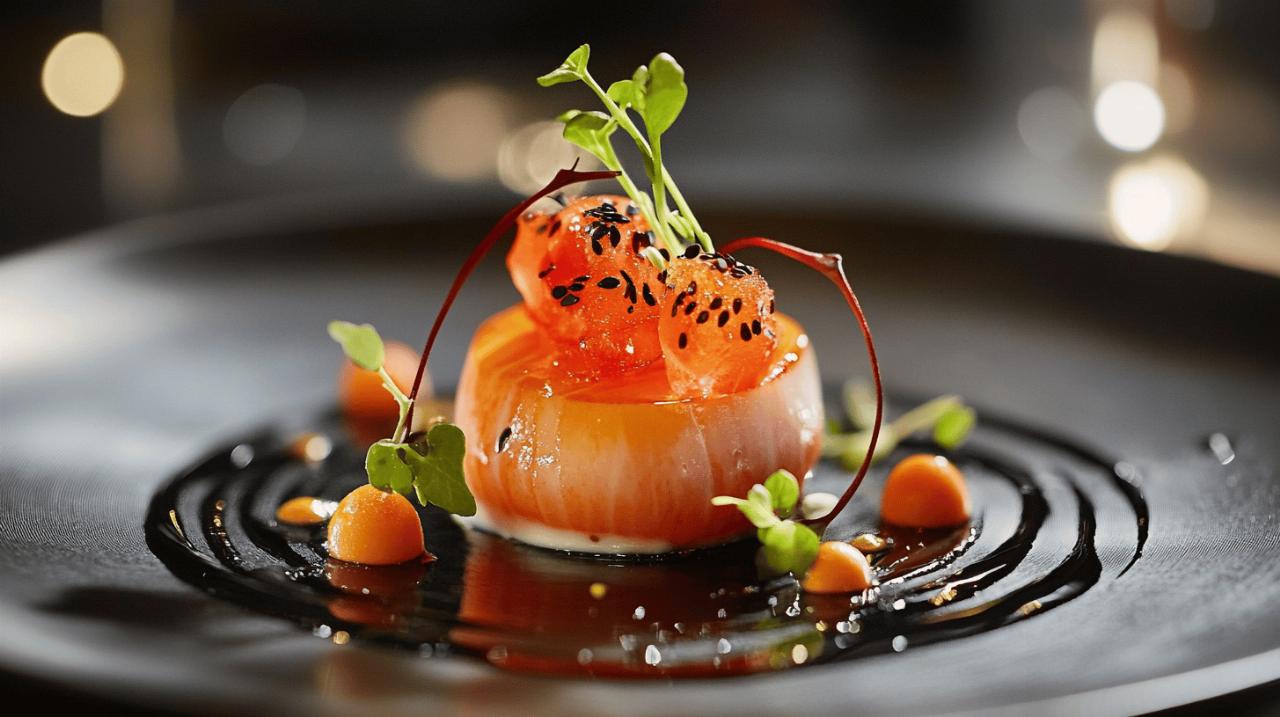The culinary world is constantly evolving, with chefs pushing boundaries to create memorable dining experiences that tantalize both the palate and the eyes. As social media continues to influence how we perceive food, the visual presentation of dishes has become almost as important as their taste. In this exploration of innovative plating techniques in fusion cuisine, we’ll discover how the melding of diverse culinary traditions is creating new standards of food presentation that are revolutionising restaurants worldwide.
The art of cross-cultural food presentation
Fusion cuisine represents the beautiful marriage of different culinary traditions, and nowhere is this more evident than in modern plating techniques. The blog Ameropa Viaggi recently highlighted this trend in their August 2025 feature on innovative culinary presentations, noting how chefs are increasingly drawing inspiration from global sources. This cross-cultural approach to food presentation isn’t merely aesthetic—it’s a thoughtful expression of how flavours, textures, and visual elements can transcend traditional boundaries to create something truly unique.
Balancing eastern and western plating philosophies
Eastern and Western culinary traditions often approach plating from fundamentally different perspectives. Western plating traditionally emphasises structured arrangements with clear delineation between protein, vegetables, and starches. Eastern traditions, particularly Japanese cuisine, focus more on negative space and asymmetrical balance. Today’s fusion chefs are masterfully combining these philosophies, creating dishes that might feature the precision of French cuisine with the minimalist aesthetic of Japanese plating. This balance requires chefs to understand the 60-30-10 rule for visual composition, where approximately 60% of the plate features the main ingredient, 30% showcases secondary components, and 10% is dedicated to garnishes that add visual interest.
Colour harmony across different culinary traditions
Colour plays a crucial role in how we perceive food, and fusion plating takes full advantage of diverse colour palettes from around the world. Successful chefs understand that contrasting colours create visual excitement while complementary colours produce harmony. The vibrant yellows and oranges of Indian cuisine might be paired with the deep greens of Mediterranean herbs, creating a plate that tells a visual story before the first bite. This thoughtful approach to colour doesn’t just make food more Instagram-worthy—it actually enhances the dining experience by setting expectations for flavour combinations that include sweet, sour, salty, and umami elements working in concert.
Modern tools and materials revolutionising fusion plating
 The technical aspects of plating have evolved significantly, with chefs now having access to specialised tools that allow for greater precision and creativity. Plating tweezers enable the delicate placement of microgreens and edible flowers, while quenelle spoons help create perfect oval shapes from soft ingredients. Restaurants implementing these advanced plating techniques report 30% more positive customer feedback, indicating that investment in presentation directly impacts dining satisfaction. Beyond tools, the training of kitchen staff in consistent plating techniques has become essential for restaurants wanting to maintain a signature visual style across all dishes.
The technical aspects of plating have evolved significantly, with chefs now having access to specialised tools that allow for greater precision and creativity. Plating tweezers enable the delicate placement of microgreens and edible flowers, while quenelle spoons help create perfect oval shapes from soft ingredients. Restaurants implementing these advanced plating techniques report 30% more positive customer feedback, indicating that investment in presentation directly impacts dining satisfaction. Beyond tools, the training of kitchen staff in consistent plating techniques has become essential for restaurants wanting to maintain a signature visual style across all dishes.
Unexpected serving vessels from global cuisines
Traditional white plates are increasingly being replaced by serving vessels inspired by diverse culinary traditions. Slates and wooden boards borrowed from rustic European presentations sit alongside banana leaf plates from Southeast Asia and stone bowls from Korean cuisine. These alternative serving surfaces not only add textural interest but also provide context for the fusion dishes they showcase. Some innovative chefs are even creating edible containers that further blur the lines between the vessel and the food itself. This approach transforms the entire plate into an immersive experience where every element tells part of a cross-cultural culinary story.
Technology-enhanced presentation techniques
Digital technology is finding its way into fusion plating, with some high-end restaurants incorporating elements like edible printing, where designs can be transferred onto thin sheets of rice paper or directly onto foods like mousses or sauces. Other chefs are experimenting with interactive presentations that change during the dining experience—dishes that transform in appearance when sauces are poured or that incorporate elements of molecular gastronomy to create movement on the plate. These technology-enhanced techniques create memorable moments that diners are likely to share on social media, extending the restaurant’s reach and reputation. The fusion of traditional culinary skills with modern technology represents the cutting edge of food presentation, attracting diners who seek novel experiences that engage all their senses.